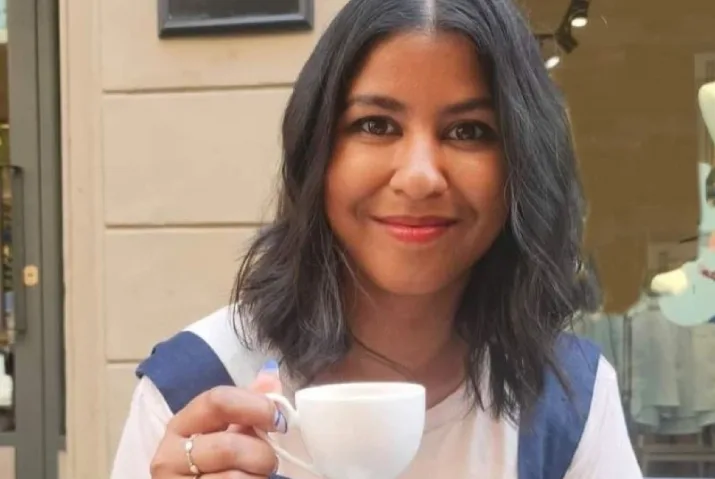What's it like being a food critic?
By Open Universities Australia
We spoke to Lee Tran Lam and Rushani Epa, seasoned food journalists (pun entirely intended) and occasional food critics.
How do you become a food critic?
Lee Tran sets the story straight right away. “Such a tiny percentage of people become food critics, so giving advice on it is a bit like giving advice on how to become Beyoncé.”
Food critics are a rarefied subset of food journalists, partly because “it’s an expensive position to bankroll. To do it right, you have to pay for someone to eat out a lot”, she says. But food is a bottomless source of stories.
“Food is interesting because it’s about geography, place, history, the environment. It can be about immigration. It can be about politics,” Lee Tran states. So, if you like eating and writing, there are many other things you could do too.
Lee Tran herself writes a review roughly once a month for The Sydney Morning Herald/Good Food, and that’s just one poppy seed on the everything bagel that is her day-to-day hustle.
She’s also written for Gourmet Traveller, The Guardian and SBS Food, been on ABC Radio and spoken at the Sydney Writers’ Festival, started Diversity in Food Media, through which she edited New Voices on Food (volumes one and two), hosts Local Fidelity on Sydney community radio station FBi, and produces Crunch Time, her weekly Patreon podcast and newsletter on all things food and dining. To answer your question, yes, she holds a communications bachelor degree. This juggle is representative of the life of a food journalist.
“The only publications that do critical food reviews are Good Food, Time Out and Gourmet Traveller,” says Rushani Epa, also a multi-hyphenate who wrote reviews as Time Out Melbourne’s food and drink editor, published food titles as Hardie Grant commissioning editor and continues as a freelance food writer, consultant and champion for diversity in food journalism as founder of Colournary, Australia’s first food and culture magazine by First Nations, Black and People of Colour.

Rushani started working in hospitality aged 14 years and 9 months, earning $8 an hour making coffee. She loved it but was told she couldn’t make a career of it. Fast forward through a couple of degrees (in arts and journalism), a soul-searching European holiday and an attempt to break into food media.
"I found it was really hard to get into. There’s an article by Nick Jordan and Colin Ho from 2018 about how 80% of food reviewers at the time were white.”
Rushani is a second-generation migrant who identifies as both Australian and Sri Lankan. But if the institution of food media wasn’t going to welcome her, then to heck with it. She’d create her own space.
In early 2020, she was working as digital content coordinator at the Vue Group (of Vue de Monde fame). The pandemic hit and her hours were reduced. With time to reflect, she decided to start something in the intersection of migrant life and food. And so lockdown became the sourdough starter to Colournary’s rise—first as a blog, then as a printed magazine, featuring people like Nornie Bero (of Big Esso) and a love letter to overseas Chinese fermentation traditions by Dennis Yong (now, of PARCS fame).
While running the magazine, she landed the food and drink editor job at Time Out, where she reviewed restaurants, wrote listings (overviews of restaurants, not critical reviews) and produced ‘best of’-style articles.
For Lee Tran, the need for a creative outlet led her to become a food blogger. The year was 2007 and she was working as sub-editor at Inside Out (a home inspiration magazine) during the day, “making sure there were no double spaces on the page and the prices of the carpets were accurate”.
With The Unbearable Lightness of Being Hungry, she was free to taste and discuss everything from Vietnamese beef bò kho buns at Bao Town (now defunct) to banana and zucchini, charred on coals, with egg yolk, miso and lemon thyme (Noma Australia, 2016). She even parlayed the blog into a podcast of the same name, where she interviewed, amongst others, Massimo Bottura, Samin Nosrat and Ben Shewry—if you don’t know them, look them up and consider this your first homework assignment on the path to becoming a food writer.
A prolific diner and equally industrious writer, the blog got her noticed and led to commissions from all the notable publications we name-dropped earlier.
What does a food critic do?
So, we’ve given you the unpolished truth about becoming a food critic (go at it sideways), but hopefully anticipating the day you land a restaurant review, here’s how it’s done.
It starts with deciding where to dine. According to Lee Tran, “At the Herald, we have spreadsheets so we know what the other reviewers are covering. We also have a look at what Terry Durack and Callan Boys are doing in Sydney. We make sure we don’t encroach on each other’s territory."
"I think about how to reflect what’s happening across Sydney, keeping my eye out as I walk down the street or scroll through Instagram. Then I have to pitch it to my editor,” says Rushani.
“I’d also have emails coming through from PR agencies or restaurateurs about openings. Obviously I keep up to date via social media too. Generally speaking, I veer towards BIPOCs taking ownership of their own cuisines or people with true lived experience—appreciation is okay, appropriation is not! If it’s a problematic restaurant owner that tends to appropriate other cuisines, I’ll avoid it.”
Rushani is also a fan of Google reviews. “I’ll look at who the reviewers are. If you see a negative review of a Thai restaurant saying ‘it’s too spicy’ and the reviewer is a white person, it’s probably going to be quite delicious!”

For the actual visit, Lee Tran goes the traditional route. “I try to keep a low profile, to have an experience like anyone else. And then afterwards, I ring them to fact check stuff and get quotes.”
On the other hand, Rushani doesn’t like remaining anonymous. “I like reviews where I’ve given people the benefit of the doubt. Sometimes when a venue has just opened, they haven’t found their feet yet. I let them put their best foot forward. I never publish negative reviews… I’d rather not write about it than potentially ruin someone’s life.”
When it comes to ordering, Rushani doesn’t hold back. “Many different entrees, share a main, get dessert.” The scrutiny extends beyond the food.
“Is the wine list mainly Australian, imported, new or old world? What’s the ambience and décor like? Who’s the owner? What have they done before? Who are the chefs? Where have they worked?”
There’s obviously the actual writing of the piece. “And before it can run, you have to put through a pic request at the photo desk, which you send to your editor, so she can organise a photographer to go down and shoot. In the request I’ll mention what dishes are worth shooting. Sometimes a dish might be interesting in the story but look like a bowl of beige,” says Lee Tran.
A bit of a fun fact—high-end restaurants will have photos of food personalities on their kitchen walls. They usually look up diners before they arrive, so even if you aren’t a food reviewer, they’ll know if you’re a ‘somebody’.
What do food critics look for in food?
Or maybe, what should critics look for in food? “It can’t just be another avocado toast and açai bowl place,” says Lee Tran. What she’s after is the story behind a place.
“Maybe they do onigiri, which is uncommon in Sydney. Maybe the chef grew up in Japan, where her mother made onigiri for her lunch box every day. And when she came to Australia, decided, she wanted to make onigiri like her mum. But, because she’s also worked at Aria and Bills, puts a chef-fy twist on what she makes,” Lee Tran continues, referring to Parami, which she recently visited.
As a food critic or food writer, you have an inherent responsibility to educate your palate (and mind) so that you’re open to different cultures, cuisines, flavours and textures—unusual doesn’t mean it’s not good. It means you don’t know enough to have an informed opinion, yet.
“Do your research into the culture and cuisine that you’ll be reviewing. If it’s a Thai restaurant, find out what region it specialises in. Learn about the techniques and dishes for that region,” says Rushani.
“Don’t refer to Asian foods as low cost or stinky and pungent and then refer to French as haute cuisine.”
Lee Tran cites Pete Wells of the New York Times as a food critic who “has been really good at re-configuring what people think is a supposedly ‘good’ restaurant” and chooses to write about taco trucks and unapologetic Bengali joints with a level of consideration that is both exceptional and overdue.
“He does it with a lot of understanding, explaining the background of these dishes and the story of the people who make them. And it’s done in a very evocative and meaningful way.”
TL;DR: What's the snack-size message?
If you’re interested in food writing, no one can stop you from eating and sharing your words on it. Keep at it and you may get asked to work on other food-centric projects, which could include writing reviews. Just don’t set out with the narrow goal of becoming a food critic.
Maybe gain formal story-seeking skills with a journalism course. Do your research, write respectfully and most important of all, eat widely!
Get ready to start your writing career. Discover online journalism courses available with universities from across Australia.
Browse thousands of courses from leading Australian universities
Or complete the form on this page to chat to an advisor about study options.



